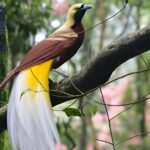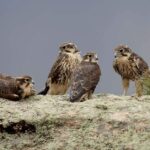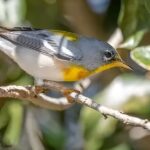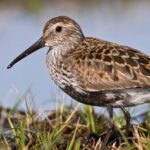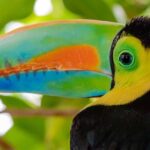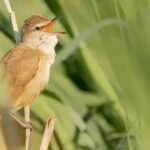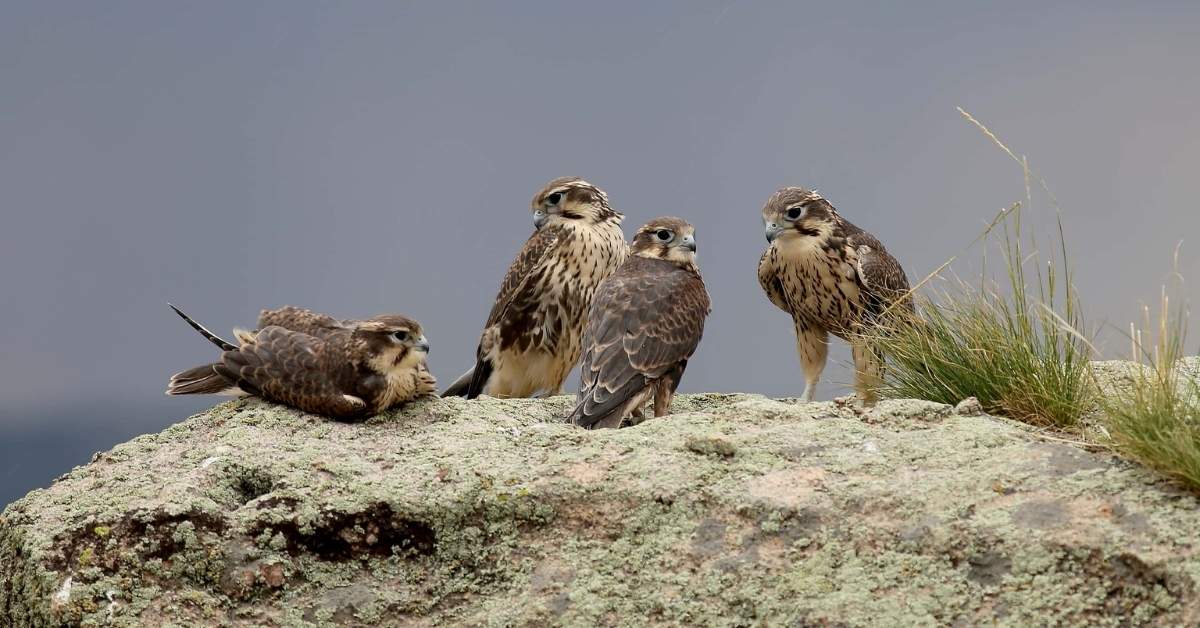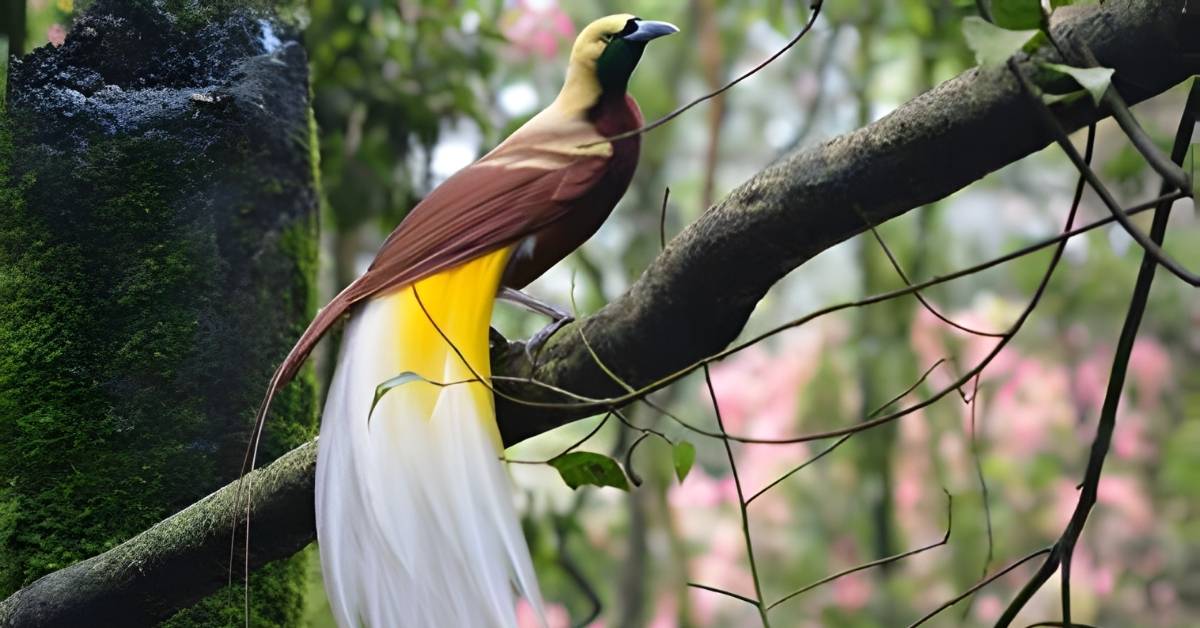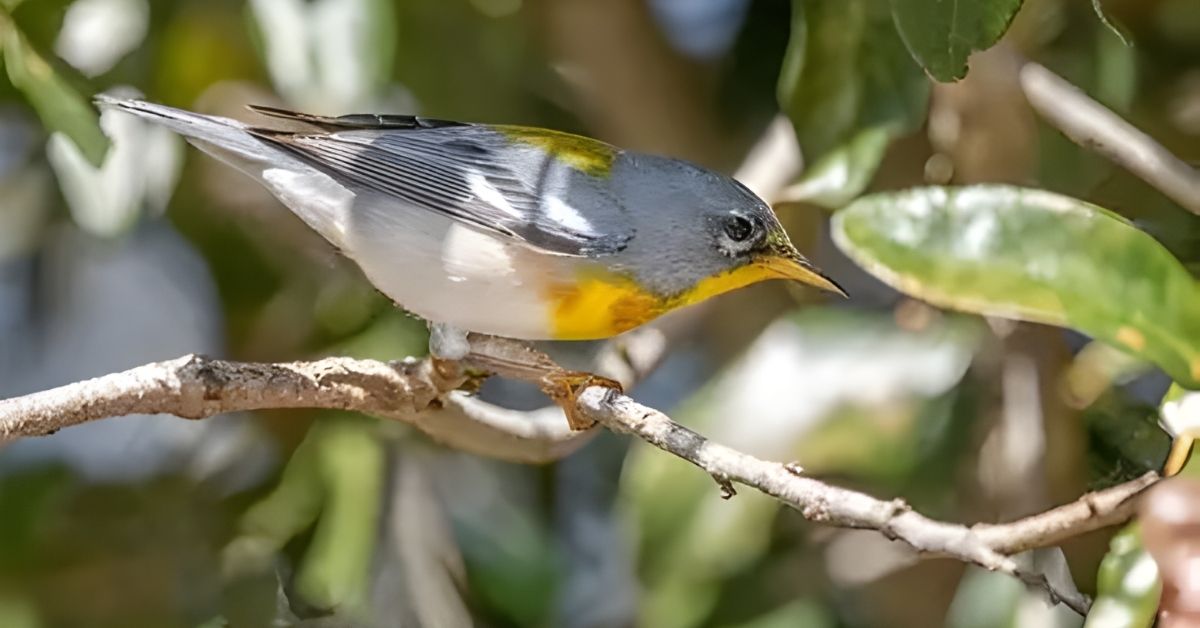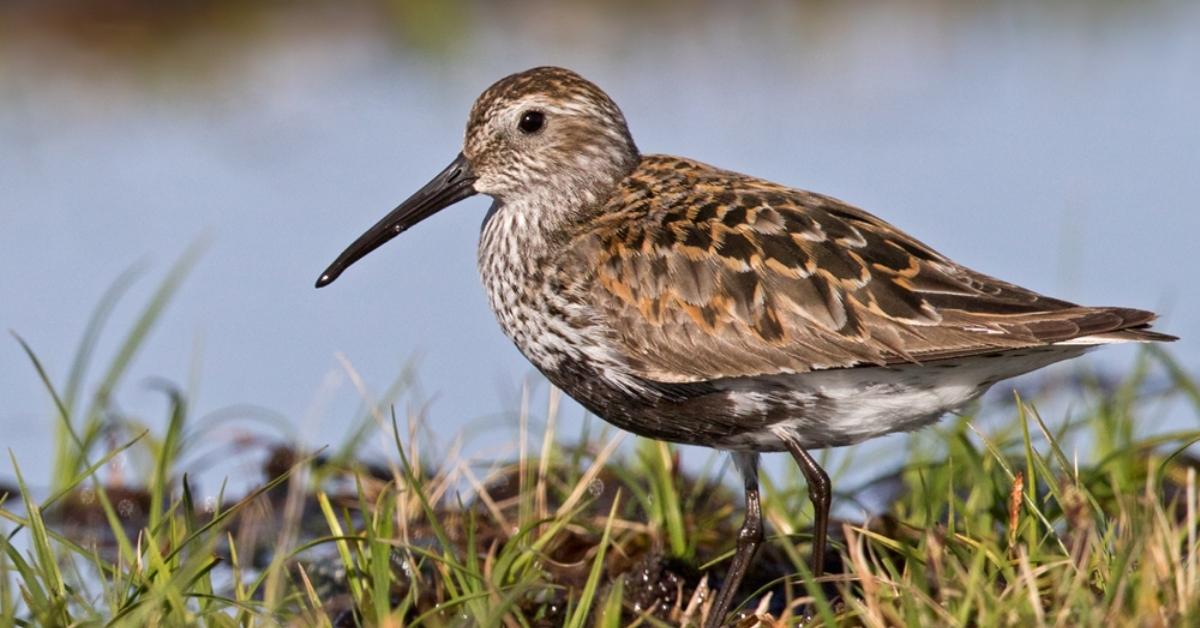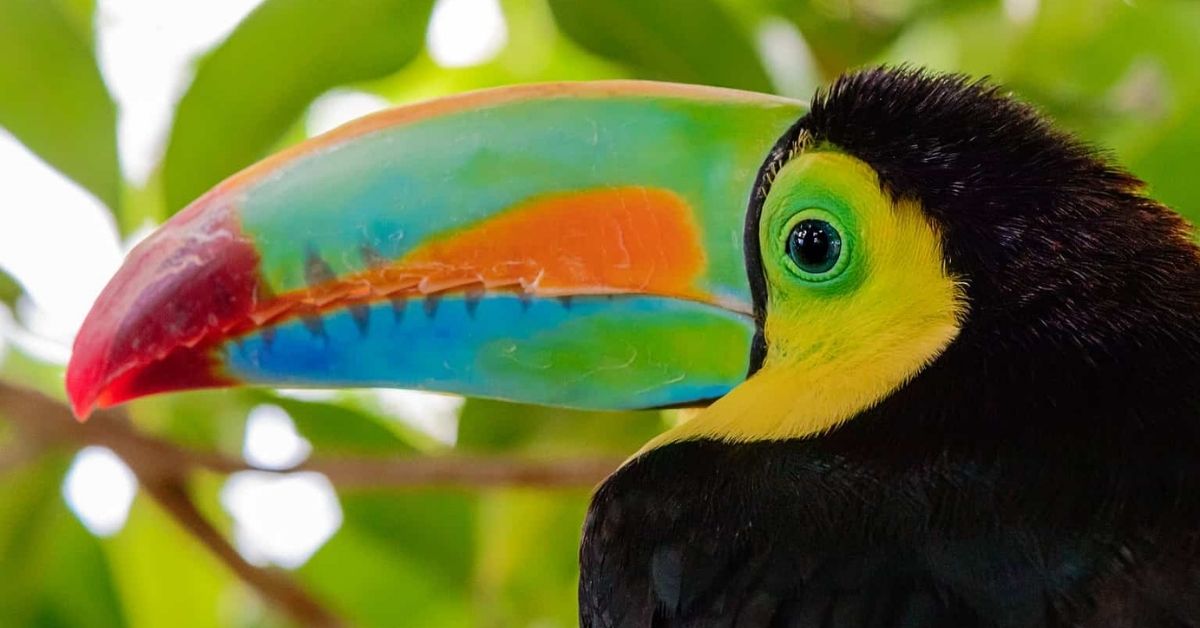Arizona Falcons are some of the most amazing birds you can see in the desert skies. These powerful hunters glide over cliffs, canyons, and wide-open plains. Arizona Falcons include fast flyers like the Peregrine and colorful birds like the American Kestrel. Each falcon has its own story, shape, and way of life.
If you love wildlife, watching the Arizona Falcons will leave you speechless. They show true beauty, strength, and freedom in flight. From cities to deserts, Arizona Falcons remind us how wild and alive the Southwest still is. Their presence makes Arizona’s skies unforgettable.
Peregrine Falcon
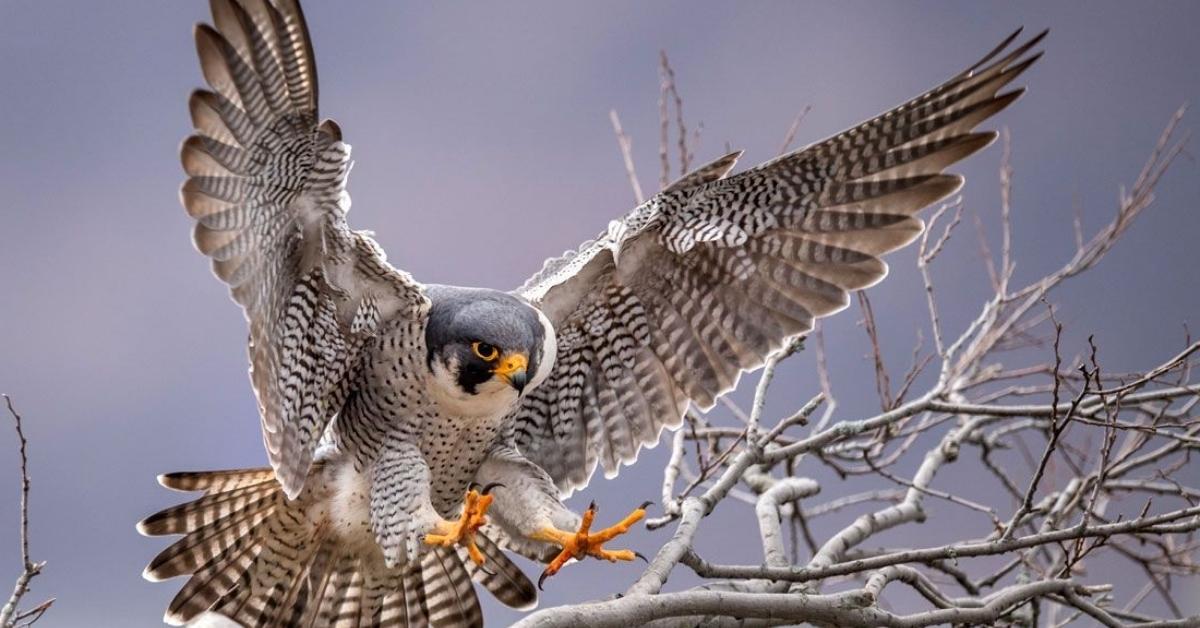
The Peregrine Falcon (Falco peregrinus) is one of the most powerful raptors you can find in Arizona. Known for its incredible dive, or “stoop,” this bird reaches speeds over 200 miles per hour, making it the fastest animal on Earth. Its slate gray or bluish back, thin dark barring, and white chest make it a breathtaking sight against the desert sky. Both female and male birds look similar, though females are usually larger, a case of sexual dimorphism common among falcon species. The Peregrine prefers to nest on tall cliffs, rocky ledges, and even urban towers across Arizona, especially in areas with plenty of pigeon and bird prey.
This species nearly vanished in the mid-20th century because of DDT pesticides, which caused widespread population decline across the United States. Through careful recovery and breeding programs, it has made a remarkable comeback. You can now spot Peregrines in urban structures, near cliffs, and even statewide where they have re-established stable populations. Their success story stands as one of America’s greatest conservation achievements, showing how habitat protection, wildlife monitoring, and strong environmental efforts can reverse damage done by human activity.
Identify Peregrine Falcons in Arizona
To identify a Peregrine Falcon in Arizona, look for a sleek falcon with long pointed wings, a short tail, and a dark “helmet” marking on the head. Its flight is rapid and powerful, with deep wingbeats followed by long glides. Peregrines often perch on cliffs or buildings, scanning for prey before making their deadly stoop.
During migration or breeding season, these falcons show up across open areas and near water sources where birdlife is plentiful. If you’re lucky, you might see one diving at incredible speed, its talons outstretched in pursuit of a pigeon or songbird.
American Kestrel
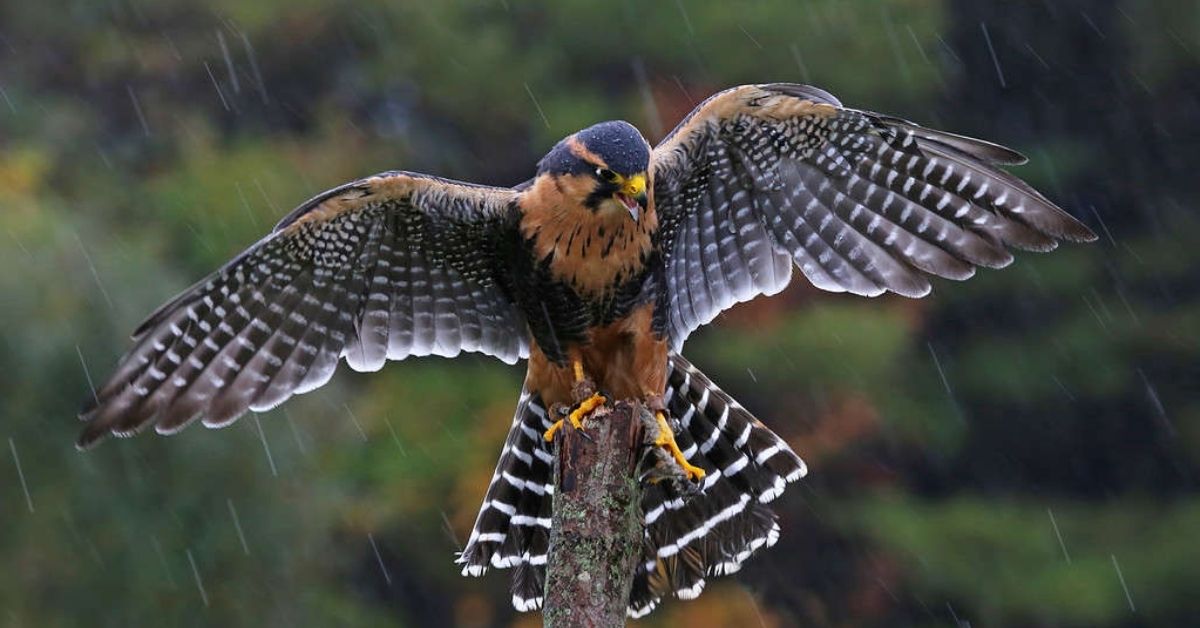
The American Kestrel (Falco sparverius) is the smallest but most colorful falcon found in Arizona. Don’t be fooled by its size, it’s a fierce hunter capable of taking down rodents, insects, and even small birds. With a mix of rust, brown, and blue-gray wings, the male kestrel stands out beautifully in the open fields, parks, and grasslands it calls home. The female, slightly larger and more streaked, is equally striking. Kestrels often perch on fences or wires, watching for prey before diving to capture it with unmatched precision.
Despite their adaptability, American Kestrels face challenges like habitat loss, competition for nesting spots, and fewer cavity nesting boxes in urban areas. Their population has shown a mild decline in some regions, prompting conservationists to encourage birdhouse placement in parks and meadows. These efforts have helped maintain stability for this beloved raptor, ensuring that it remains a familiar sight across Arizona’s open landscapes.
Identify the American Kestrel
You can identify a Kestrel by its small robin-sized body, spotted tail, and black “mustache” marks on its face. Watch for its unique hovering behavior, a signature move while it scans for prey in open fields.
The male’s blue-gray wings contrast with his rust-colored back, while the female’s plumage is more uniformly brown. These birds are easy to observe in meadows, desert grasslands, and even along highways where they perch waiting for insects and rodents to appear.
Prairie Falcon
The Prairie Falcon (Falco mexicanus) is a true bird of the open desert and grasslands. Its pale brown back, white underparts, and bold vertical stripes give it a clean, sandy look that blends perfectly into its arid habitat. The Prairie Falcon favors rocky cliffs, pastures, and farmland, nesting in high, dry areas with good visibility. These birds rely on keen eyesight and swift flight to catch rodents, reptiles, and small birds across the plains of Arizona.
Unlike the Peregrine, this species avoids cities and forests, thriving in isolated open landscapes where it can patrol for food. Its territorial behavior and strong soaring ability make it a dominant predator in the region. Observers often find them nesting in cliffs at higher elevations, especially near grassland edges and arid plateaus.
Also Read This: #15-Warbler Found Florid
How to Identify a Prairie Falcon
Spotting a Prairie Falcon isn’t too hard once you know what to look for. Notice its light plumage, dark armpit patches on the wings, and broad chest. When it flies, the falcon’s strong wingbeats and confident glides reveal its incredible power.
The bird’s call is a loud “kik-kik-kik,” echoing across the desert cliffs. Watch for these falcons soaring over pastures or perched on rocky outcrops where they guard their nests.
Merlin
The Merlin (Falco columbarius) is a small but muscular falcon that appears in Arizona during the cooler months. These migratory birds move through the state as part of their annual journey south, though some individuals winter here.
With stocky bodies, pointed wings, and quick, direct flight, the Merlin looks powerful despite its size. It prefers open forests, shrublands, and grasslands, often seen chasing small birds through the air in thrilling high-speed pursuits.
How to Identify a Merlin
Identifying a Merlin involves looking for a compact bird with dark streaking, variable coloration, and quick, purposeful wingbeats. Unlike the Kestrel, it rarely hovers. Instead, it relies on surprise attacks and short bursts of powerful flight to capture prey.
The Merlin often reuses old nests made by jays, magpies, or crows, showing clever adaptation to its habitat. Because of their unpredictable migration and breeding habits, spotting one in Arizona feels like finding a hidden treasure for any birder.
Crested Caracara
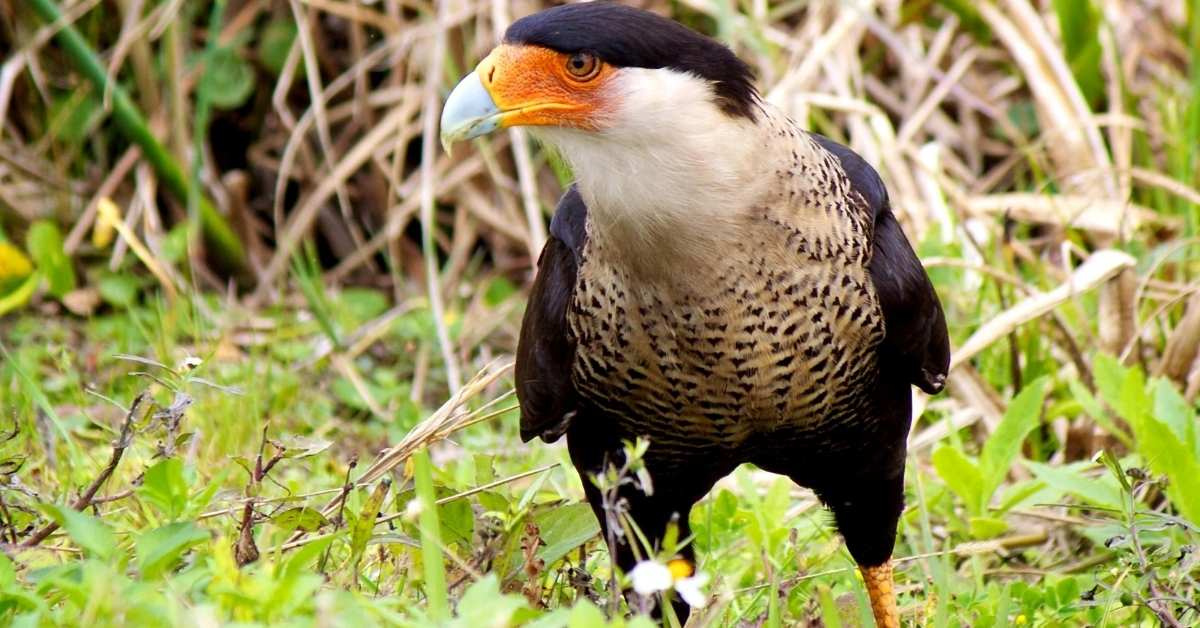
The Crested Caracara (Caracara plancus cheriway) stands apart from other falcons in Arizona. With its long legs, flat head, and bold black and white plumage, it looks more like a cross between a hawk and a vulture.
You’ll often find this bird walking across the ground, feeding on carrion, reptiles, or insects rather than hunting mid-air. Native to southern Arizona, this species extends its range through Mexico, Central America, and beyond.
Identifying the Crested Caracara
Look for a Caracara with an orange facial skin, yellow legs, and a tall, upright posture. It thrives in open plains and grasslands, often near ranchlands or desert scrub. Its unusual behavior, scavenging diet, and ground-feeding habits make it
one of the most fascinating falcons in the region. The Crested Caracara plays an important role in the ecosystem, cleaning up carcasses and maintaining ecological balance across southern Arizona.
FAQs
What is the biggest hawk in Arizona?
The biggest hawk in Arizona is the Ferruginous Hawk. It has broad wings and can reach over 4 feet in wingspan.
Are American Kestrels in Arizona?
Yes, American Kestrels are common across Arizona. They live in deserts, grasslands, and city parks year-round.
Are falcons in Texas?
Yes, falcons live in Texas too. You can spot species like the Peregrine Falcon, American Kestrel, Prairie Falcon, and Aplomado Falcon there.
Conclusion
The Arizona Falcons are a true symbol of freedom and power. Watching them fly across the sky is a special sight. These strong birds live in deserts, grasslands, and cliffs all over the state. Each one, from the Peregrine to the Caracara, shows the wild heart of Arizona. Arizona Falcons hunt, soar, and protect their nests with skill and grace.
People travel from everywhere to see the Arizona Falcons in their natural home. They bring life to the open skies and remind us to care for our wildlife. Protecting Arizona Falcons means protecting nature itself. Their beauty and strength make Arizona’s skies come alive.

Spiritual Vora shares deep insights on dreams, angel numbers, spiritual meanings, and inner healing. Our mission is to guide souls toward clarity, growth, and divine connection through uplifting and enlightening content.

